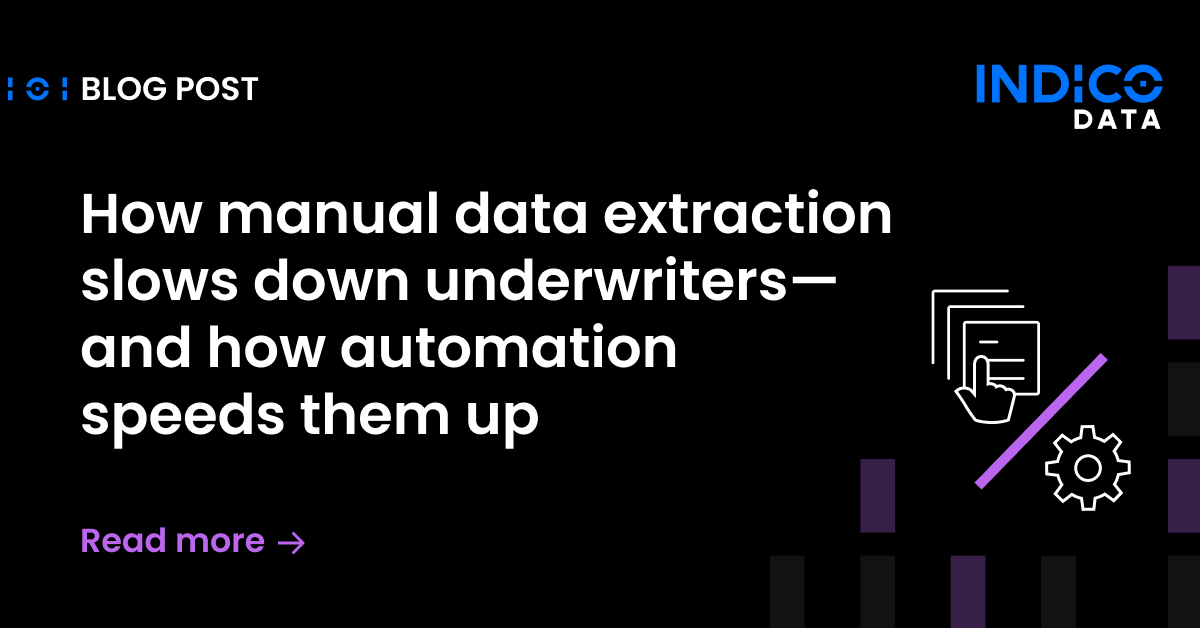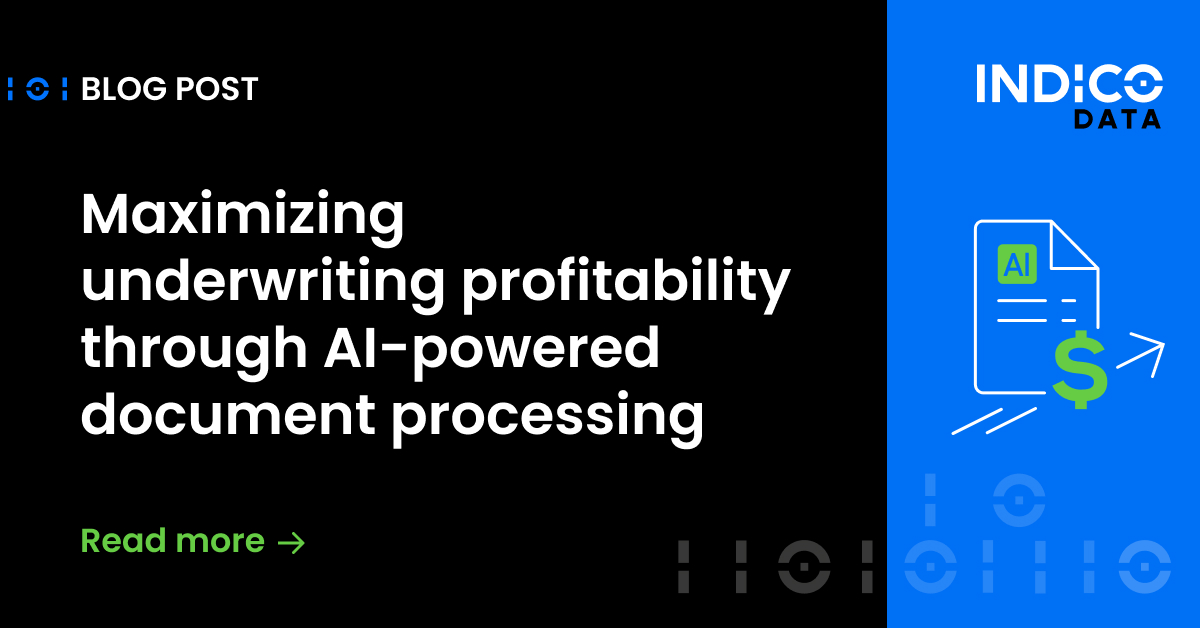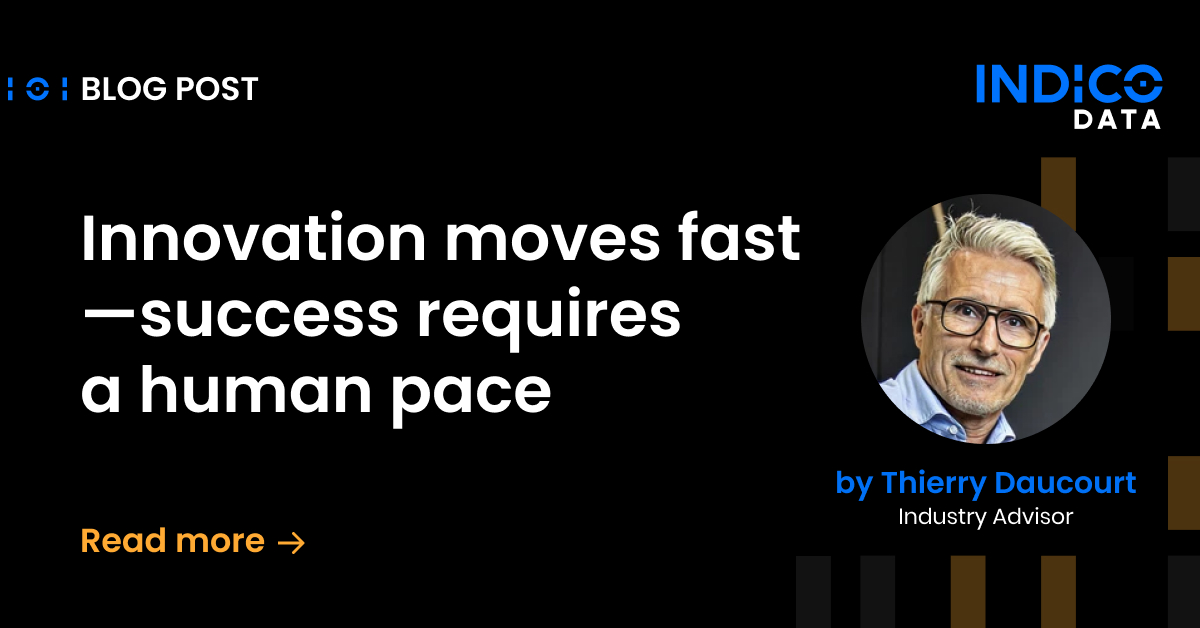It was gratifying to see how well Indico Data did in the most recent Everest Group PEAK Matrix report on Intelligent Document Processing products, and in only our second appearance. Everest labeled Indico Data a “Star Performer” and “Major Contender” while using terms like “visionary” to describe the Indico Unstructured Data Platform. It noted customers “called out the ease of use of the platform, its flexibility and scalability” as “major areas of strength.”
It’s true that customers do routinely say those things, and we do like to think of ourselves as “visionary.” But what many customers may find most valuable about the report is its explanations of just what intelligent document processing does and the value it brings.
To folks who may be frustrated with the limitations of robotic process automation tools and templated approaches to automated document processing, IDP does represent a sea change and Everest captured that well.
Everest defines enterprise-grade IDP
“IDP software solutions blend the power of AI technologies to efficiently process all types of documents and feed the output into downstream applications,” the report says. An “enterprise-grade” IDP solution also performs the following four actions:
- Pre-processing, which Everest describes as image pre-processing to increase the quality of scanned documents and using optical character recognition (OCR) and/or computer vision technology to capture data.
- Classification, which involves indexing and classifying documents into categories, including by using machine learning capabilities.
- Extraction of relevant data, again leveraging ML as well as natural language processing and deep learning capabilities.
- Post-processing, which involves validating the extracted data, such as with business validation rules.
As you probably know, those are all things an RPA or templated tool can’t do for a simple reason: they work only with structured data. As Everest points out, “IDP solutions can process structured, semi-structured and unstructured documents.” Given unstructured data accounts for 85% to 90% of all data in most enterprises, that’s a huge differentiator for IDP.
Drivers of intelligent document processing adoption
It should be no surprise then, that Everest says the major driver behind IDP adoption is “to unlock insights from semi-structured/unstructured data to improve operational efficiency and strategic outcomes.”
Specifically, Everest says companies look to IDP to help in four areas:
- Reduce the cost of processing huge volumes of data
- Increase accuracy and speed
- Achieve synergy by combining IDP with RPA, business process management and process orchestration tools
- Improve strategic business outcomes beyond cost reduction, such as by improving the customer experience
Again, I couldn’t agree more with this assessment and those are indeed benefits our customers are realizing every day.
Qualities of a mature IDP solution
Of course, not all IDP platforms are created equal and rating the various players is the main focus of the Everest report. Here again, I was quite happy with the results. I thought one section of the report was particularly telling.
It noted that, as a category, IDP solutions were low on the maturity scale when it came to handling documents of high or medium complexity. High complexity documents are those that include cursive handwriting, charts, stamps and signatures. Everest defines medium complexity as handwritten block text, check boxes, barcodes and logos.
Perhaps Indico did so well because it can ably handle all of those categories, and more. Indeed, among the Indico Data strengths Everest noted was the ability to “extract information from various unstructured data sources such as documents, images, and videos for its application in analytics and automation.” That leads to the platform’s “applicability over a wide range of use cases,” Everest noted.
The report correctly noted the most recent version of our platform, Indico 5, supports some 80 languages and that we offer an online marketplace where service partners and customers can sell or exchange pre-trained models, helping them realize value that much faster. Similarly, we’ve expanded the pre-packaged solutions we offer to various new documents, such as ACORD forms.
Everest also gave us kudos for significant improvement in our monitoring, analytics, and dashboarding features. That includes monitoring of process metrics such as straight-through process (STP) and accuracy, model performance metrics, and worker metrics like errors fixed and time spent on tasks.
But I’ve said enough. You can download the Indico-specific portion of the Everest report on us and see for yourself what Everest had to say, including discussion of some features and functions we’re still working on. Or download the full report here (fee required).
If you’re ready to give it a try, register for a free trial to test the platform or schedule an in-depth demo. You’ll soon see what our existing customers are so happy about.


